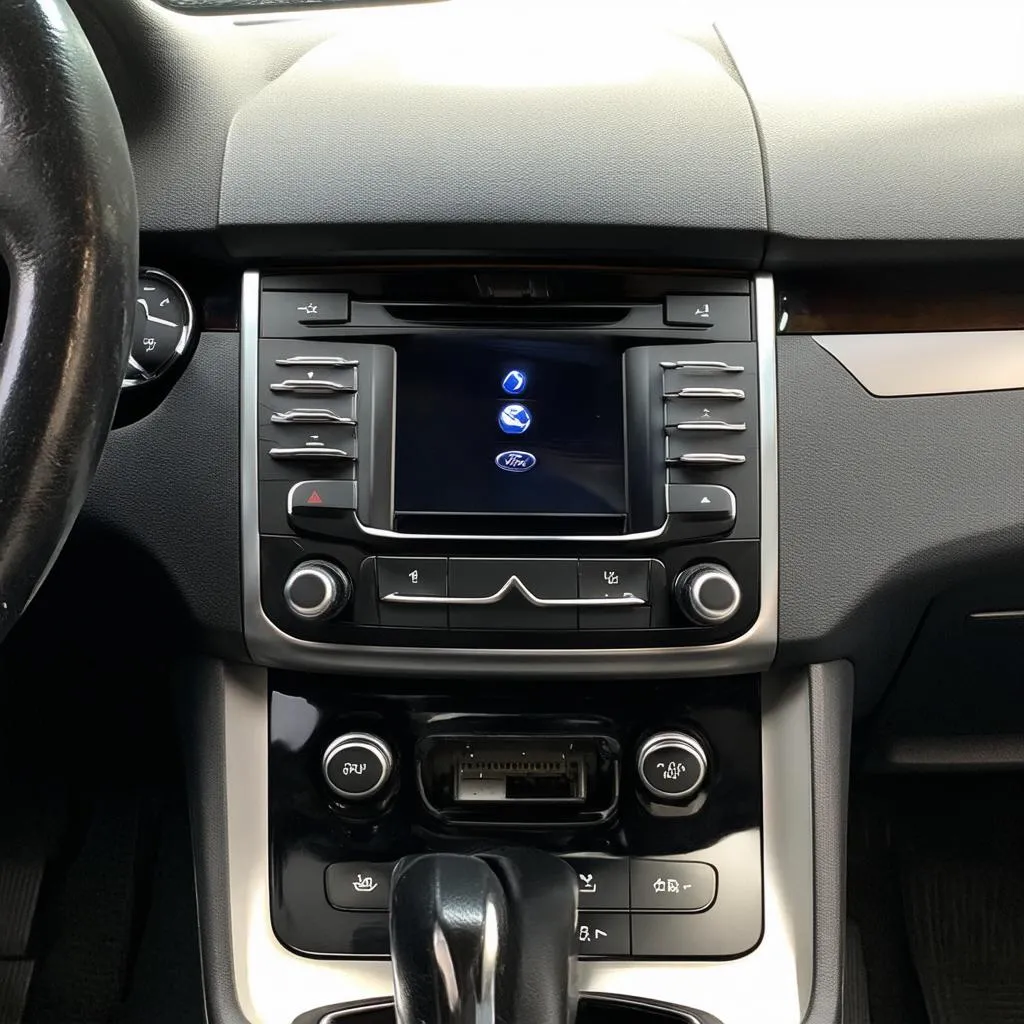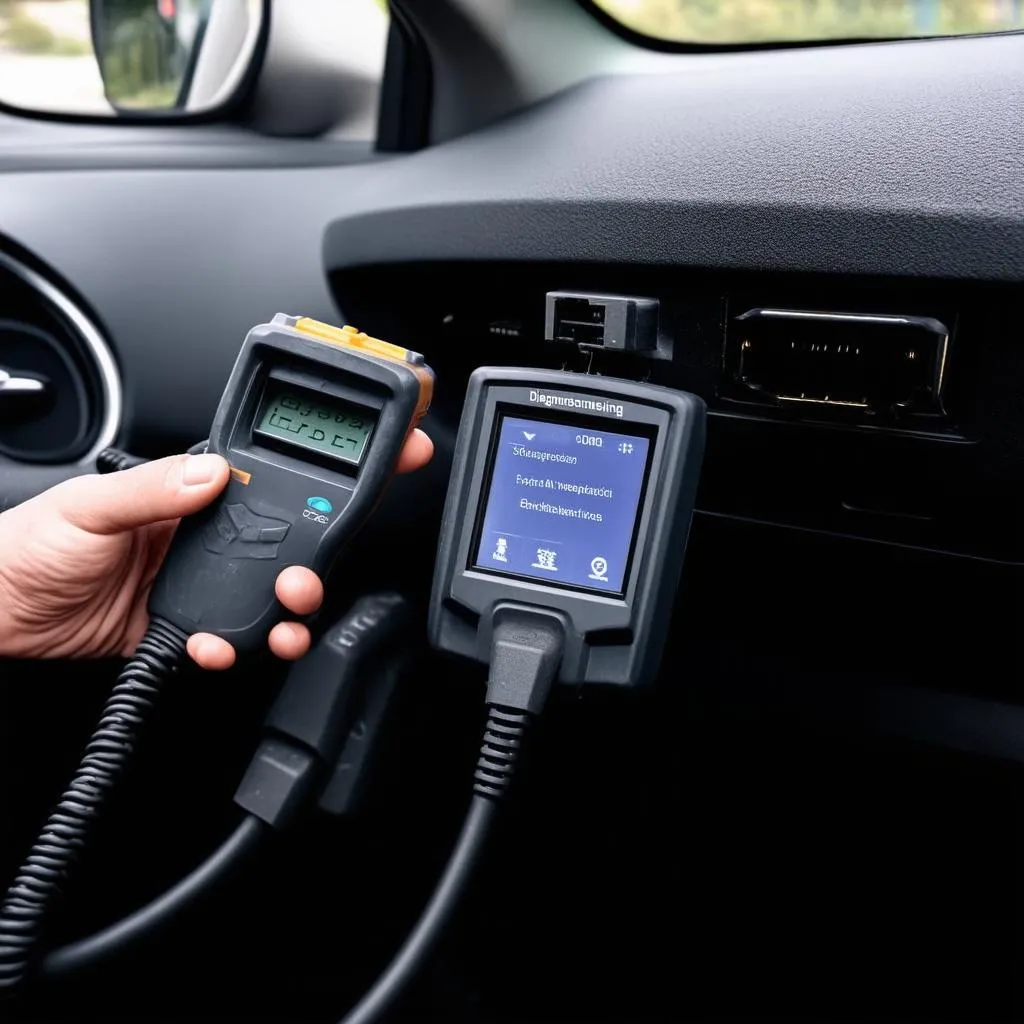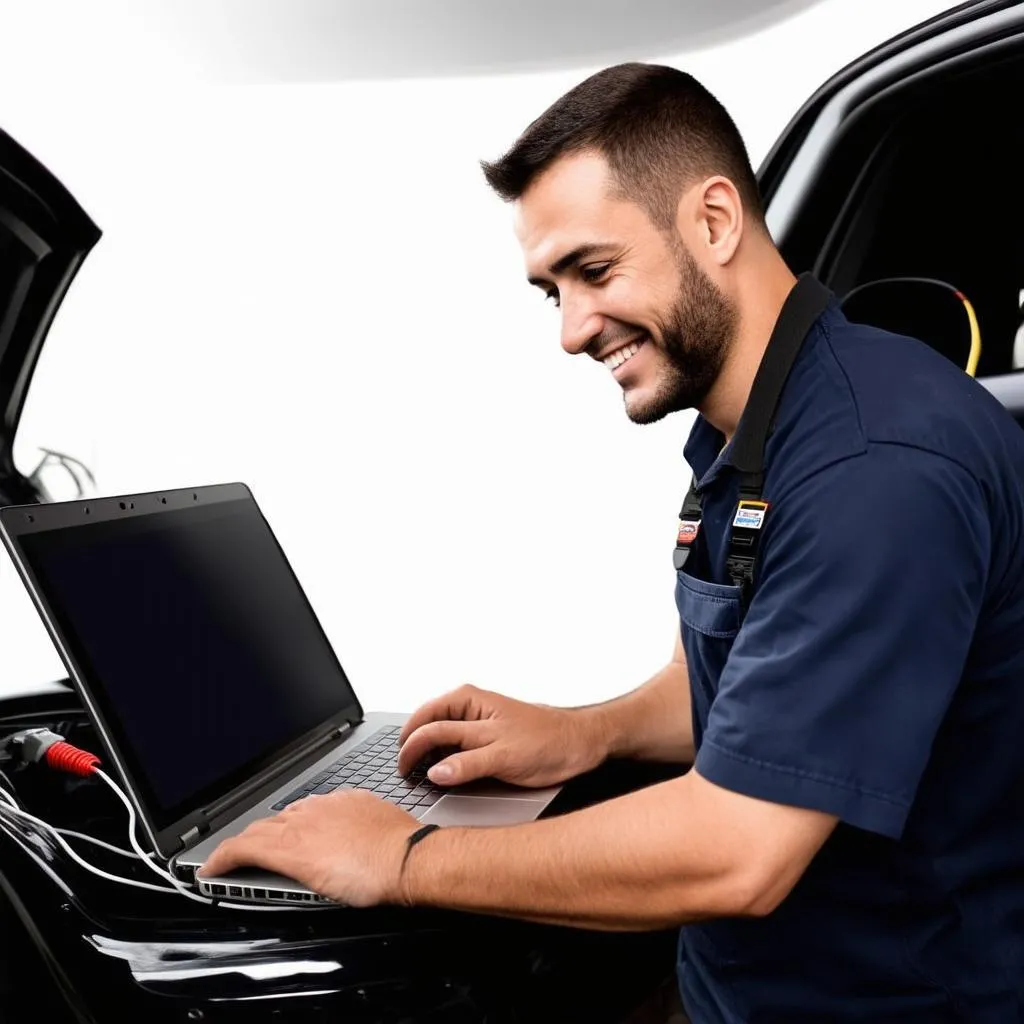Imagine this: You’re cruising down Sunset Boulevard in your trusty 2015 Ford Explorer, California sun warming your face. Suddenly, that pesky check engine light decides to ruin the vibe. Frustrating, right? But what if you had a secret portal to communicate with your car and understand its woes? That’s precisely what the OBD port is for.
What’s the Deal with the 2015 Ford Explorer Obd Port?
Whether you’re a seasoned mechanic or a car enthusiast like me, understanding the OBD (On-Board Diagnostics) port can be a game-changer. This little port, often tucked away under the dashboard on the driver’s side, acts as your car’s communication hub.
Why should you care?
- Diagnose Problems: Think of the OBD port as your car’s personal physician. By connecting a scan tool (more on that later), you can read diagnostic trouble codes (DTCs), which act like your car’s way of saying, “Hey, something’s not quite right.”
- Clear those Pesky Lights: Once you’ve addressed the issue, you can use the OBD port to clear those dashboard warning lights, bringing back the zen to your driving experience.
- Unlock Hidden Performance: Want to monitor your fuel economy or see how your engine is performing in real-time? The OBD port opens a world of data that can satisfy your inner car geek.
Let’s break it down even further:
Unmasking the Mystery: Understanding OBD Codes
You see, when your Explorer detects an issue, it generates a specific code stored in its computer system. These codes, like a secret language, can seem cryptic at first. However, a good OBD-II scanner can translate them into plain English, pinpointing the problem area.
For example:
- P0420: A common code, this indicates a potential issue with your catalytic converter.
- P0171: This code suggests your engine might be running lean, meaning it’s not getting enough fuel.
Finding the Elusive Port
In most 2015 Ford Explorers, the OBD port is located beneath the driver’s side dashboard, often near the steering column or the fuse panel. It’s a standard 16-pin connector, resembling a trapezoid. Can’t find it? Don’t worry, your owner’s manual will guide you.
 OBD Port Location
OBD Port Location
Choosing the Right Tool for the Job: OBD Scanners
Now that you know where the magic happens, you’ll need the key to unlock it: an OBD scanner.
There are a plethora of options out there:
- Basic Code Readers: These affordable devices can read and clear basic engine codes. Perfect for the DIY enthusiast who wants to understand those dashboard lights.
- Advanced Scan Tools: For the more tech-savvy, these tools offer a deeper dive into your car’s systems, providing live data streams, advanced diagnostics, and even the ability to program certain modules.
Pro Tip from Dr. Emily Carter, automotive engineer and author of “The Connected Car”: “When choosing a scanner, consider your needs and budget. A basic code reader is sufficient for most car owners. However, if you’re a gearhead who loves data, an advanced scan tool can be a worthy investment.”
Beyond Diagnostics: The OBD Port’s Versatility
The OBD port’s power goes beyond just reading codes. It can be a gateway to enhancing your driving experience.
- Performance Monitoring: Want to analyze your driving habits? OBD devices can track your acceleration, braking, and even fuel consumption, helping you become a more efficient driver.
- Security Enhancements: Certain OBD devices offer GPS tracking and even remote vehicle immobilization, adding an extra layer of security to your beloved Explorer.
 Car Diagnostic Tool
Car Diagnostic Tool
Frequently Asked Questions: Demystifying the OBD Port
Here are some common queries that might be swirling in your mind:
Q: Can I damage my car by using the OBD port?
A: Relax! The OBD port is designed for safe and easy access. As long as you’re using a compatible scanner and not forcing anything, you’re good to go.
Q: Are all OBD scanners compatible with my 2015 Ford Explorer?
A: While most modern scanners are compatible, it’s always a good idea to double-check compatibility before purchasing. Look for scanners that explicitly mention support for Ford vehicles or are OBD-II compliant.
Q: Do I need to take my car to a mechanic, or can I handle OBD diagnostics myself?
A: Basic code reading and clearing can be done by most car owners. However, for more complex issues, it’s best to consult a qualified mechanic, especially if the check engine light keeps coming back.
Q: Can the OBD port drain my car battery?
A: Generally, no. Most modern scanners have minimal power draw. However, if you’re leaving a device plugged in for an extended period, it’s a good practice to disconnect it.
Explore Further: More Automotive Insights Await
Want to learn more about how to interpret those OBD codes or discover other hidden features of your Ford Explorer? Check out our related articles:
Need a Hand? We’re Here to Help!
Feeling overwhelmed or need help installing diagnostic software? Don’t hesitate to reach out! Our team of automotive experts is available 24/7 to assist you. Contact us via WhatsApp at +84767531508, and let’s get you back on the road with confidence.
 Car Diagnostic Service
Car Diagnostic Service
Remember, knowledge is power, especially when it comes to your car. Understanding your 2015 Ford Explorer’s OBD port opens a world of possibilities, empowering you to take control of your vehicle’s health and performance. Happy driving!